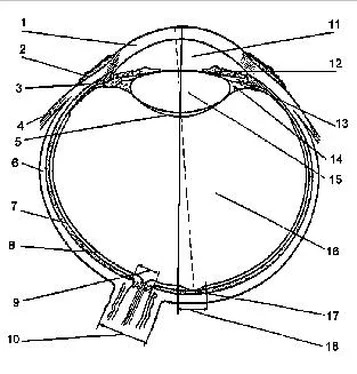The United States Army Marksmanship Unit Training Manual
Здесь есть возможность читать онлайн «The United States Army Marksmanship Unit Training Manual» весь текст электронной книги совершенно бесплатно (целиком полную версию без сокращений). В некоторых случаях можно слушать аудио, скачать через торрент в формате fb2 и присутствует краткое содержание. Город: Fort Benning, Georgia., Год выпуска: 1979, Издательство: .S. Army Marksmanship Unit, Жанр: Прочая документальная литература, Руководства, на английском языке. Описание произведения, (предисловие) а так же отзывы посетителей доступны на портале библиотеки ЛибКат.
- Название:The United States Army Marksmanship Unit Training Manual
- Автор:
- Издательство:.S. Army Marksmanship Unit
- Жанр:
- Год:1979
- Город:Fort Benning, Georgia.
- ISBN:нет данных
- Рейтинг книги:4 / 5. Голосов: 1
-
Избранное:Добавить в избранное
- Отзывы:
-
Ваша оценка:
- 80
- 1
- 2
- 3
- 4
- 5
The United States Army Marksmanship Unit Training Manual: краткое содержание, описание и аннотация
Предлагаем к чтению аннотацию, описание, краткое содержание или предисловие (зависит от того, что написал сам автор книги «The United States Army Marksmanship Unit Training Manual»). Если вы не нашли необходимую информацию о книге — напишите в комментариях, мы постараемся отыскать её.
Because it is a U.S. government publication, it is public domain
The United States Army Marksmanship Unit Training Manual — читать онлайн бесплатно полную книгу (весь текст) целиком
Ниже представлен текст книги, разбитый по страницам. Система сохранения места последней прочитанной страницы, позволяет с удобством читать онлайн бесплатно книгу «The United States Army Marksmanship Unit Training Manual», без необходимости каждый раз заново искать на чём Вы остановились. Поставьте закладку, и сможете в любой момент перейти на страницу, на которой закончили чтение.
Интервал:
Закладка:
c. In 1959, the American Cancer Society began a study to prove that there exists an association between cigarette smoking and many physical complaints. The study involved 1, 079, 000 men and women (smokers and nonsmokers). For comparison purposes we have listed five of the more important complaints:
COMPLAINT CIG. SMOKERS NON-SMOKERS
Cough 33.2% 5.6%
Loss of appetite 3.3% 0.6%
Shortness of breath 16.3% 4.7%
Easily fatigued 26.1% 14.9%
Loss of weight 7.3% 4.5%
One can readily see that the complaints were more prevalent among the cigarette smokers than non-smokers. The study further revealed that lung functioning is affected if one inhales cigarette smoke regardless of age. For example: A young man who smokes one pack of cigarettes per day has the same efficiency of lung functioning of a man 20 years senior to him who does not smoke.
2. Effects of Tobacco on Shooting:
a. The combined effects of nicotine and carbon monoxide explain why the pistol shooter must avoid smoking if he is to shoot with the greatest possible skill. This conclusion does not mean that an individual or a team whose members smoke may not win, if it is competing against inferior opponents, but it does mean that any individual shooter on a team cannot perform at his best if he uses tobacco. The top competition today does not allow a margin of indulgence if you expect to win. Denying yourself a quick drag on the weed is not a sacrifice, it is a necessity for victory.
b. Simply explained, cigarette smoking affects the smoker by:
(1) Initially, slowing the pulse rate.
(2) Increasing the pulse rate.
(3) Increasing blood pressure and overworking the heart.
(4) Reducing the oxygen capacity of the blood, causing shortness of breath.
(5) Bringing on fatigue more quickly.
c. From the standpoint of shooting, smoking does affect performance, and more importantly, control. It is possible to become more proficient in shooting and still continue smoking, but the road is long and the progress slow. Many of our top shooters can attest to that fact. Today most of the top shooters are in the non-smoking class. It is not that they have never had the habit, but that the determination to reach the top was stronger than the addiction to tobacco. Occasionally, you may see one sport a cigar, but seldom, if ever, will you see one inhale tobacco smoke. Consequently, the crux of the problem of smoking is the inhalation of tobacco smoke. Herein lies the answer. Stop inhaling and you have solved the problem. It is the inhaled nicotine and carbon monoxide that are responsible for upsetting the normal body balance. For this reason we find many shooters making the switch from cigarettes to pipes and cigars, since the smoke of each is generally too toxic for the normal person to inhale. Performance as well as health improves accordingly. For the shooter who will consider quitting, we offer a plan, entitled “You Can Quite Smoking”, paragraph D-4, this chapter. Mark Twain once said that he had no difficulty giving up smoking, and added “I have done it a thousand times”. If you decide though, make it permanent.
3. The report of the Surgeon General of the US Public Health Service, released on 11 January 1964.
“SMOKERS DIE EARLY” it says, “Smoking cigarettes is a health hazard that calls for corrective action — and is a major cause of lung cancer and other death-dealing diseases, especially in men”, a blue-ribbon federal panel reported.
In short, the panel indicated, the more you smoke, the greater your risk of an early death. Deeply inhaled cigarette smoke sends a threat of premature death spreading through the lungs, arteries and the heart itself.
a. Lung tissue was obtained from more than 1000 postmortems, put on microscope slides and carefully examined by pathologists. The slides were identified only with coded numbers, and pathologists did not know their origin. Later, statisticians matches the pathological findings with the histories of the dead patients. The results added up to an elaborate description of progressive smoke damage.
b. Deeply inhaled smoke, the researchers found, irritates the cells that line the tiniest chambers of the lung (alveoli). The walls of the alveoli thicken, lose their elasticity and much of their ability to do their vital job of exchanging carbon dioxide for oxygen. Subjected to sudden stress — such as a cough or sneeze — the alveolar walls rupture; a minute part of the lung becomes useless.
c. Even while it is attacking the alveoli, smoke also damages the small arteries that carry blood to the interior lung surfaces for oxygenation. The artery walls become fibrous and thickened. Soon, internal deposits on the thickened walls make the arteries so narrow that little blood can get through. Eventually many tiny arteries are blocked completely.
These two sets of events alone would be enough to explain why thousands of Americans are “lung cripples”, suffering from what most U. S. Doctors call pulmonary fibrosis and chronic emphysema. But the damaging chain of events runs on.
d. The destruction of smaller blood vessels in the lung and the thickening of slightly larger ones increases the blood pressure in the pulmonary arteries and puts a strain on the right side of the heart. It also prompts the left side of the heart to work harder to pump blood against increased resistance. A healthy heart could probably stand the extra work; a heart already weakened by other difficulties might fail.
e. Even while the heart is being asked to overexert, carbon monoxide from cigarette smoke combines with red blood cells decreases their capacity to carry oxygen. As a result, the hardworking heart muscle is given less fuel to do its job. At the same time, tobacco’s nicotine causes a constriction of small arteries in the extremities and speeds up the heart, increasing its need for oxygen and complicating the coronary problem.
f. Smoking dulls the sense of taste causing loss of appetite, thus creating a loss of weight. For this reason people who give up smoking tend to stop losing weight. They begin to taste food again and enjoy eating.
4. You Can Quit Smoking!
a. A vicious, velvety trap; Light a cigarette, smoke it, taste its bitterness, put it out. Even as you do, you know that you will want another. Not that you enjoy it. You simply want it, and why?
(1) When you smoke a cigarette, for instance, nicotine, carbon monoxide, small amount of hydrocyanic acid, pyridine and various phenols and aldehydes are absorbed into your lungs and mouth. Your nervous system is momentarily stimulated. Your blood pressure goes up. Your pulse rate increases.
(2) Most important of all to the satisfaction of the habitual smoker, your blood vessels undergo a constriction. This “slows you down”. That is, after the momentary stimulation, smoking depresses, for a far longer period.
(3) When you smoke, you are artificially slowing down most of your body’s normal activities. If you are suddenly confronted with an emotional psychological emergency: adrenalin is pumped into your blood stream, your muscles tense, you breathe faster and get edgy, jittery — “nervous”. Tobacco smoke retards these natural processes by slowing the blood circulation and thus “calming you down”. You find a smoke is “good for your nerves”.
(4) If you smoke a pack and a half of cigarettes a day, you smoke an average of one cigarette every 32 minutes of your waking hours. That many crises don’t arise every day. You need cigarettes simply because your body has come to expect this depressant effect every so often. You begin consciously to want to cigarette.
(5) There is little true pleasure in smoking. The harsh taste, the hot dryness is tolerated, for the sake of tobacco’s mild narcotic effect. If it were possible for you to go without cigarettes for the next 24 hours, and then light one, you would find out how distasteful and noxious tobacco smoke really is. If you think this is an exaggeration, try it.
Читать дальшеИнтервал:
Закладка:
Похожие книги на «The United States Army Marksmanship Unit Training Manual»
Представляем Вашему вниманию похожие книги на «The United States Army Marksmanship Unit Training Manual» списком для выбора. Мы отобрали схожую по названию и смыслу литературу в надежде предоставить читателям больше вариантов отыскать новые, интересные, ещё непрочитанные произведения.
Обсуждение, отзывы о книге «The United States Army Marksmanship Unit Training Manual» и просто собственные мнения читателей. Оставьте ваши комментарии, напишите, что Вы думаете о произведении, его смысле или главных героях. Укажите что конкретно понравилось, а что нет, и почему Вы так считаете.












